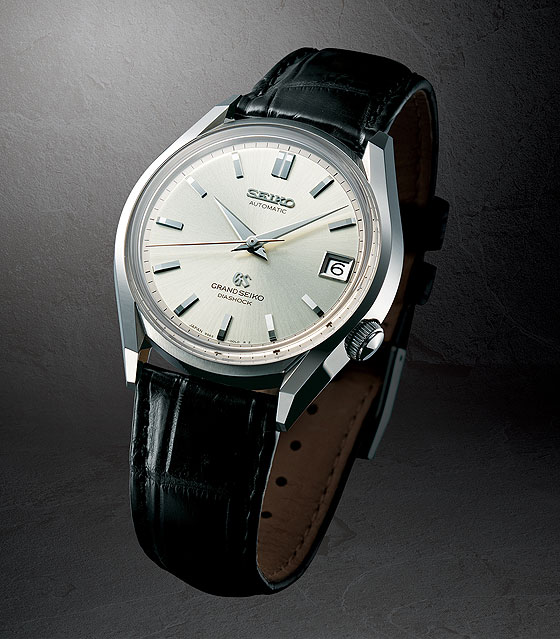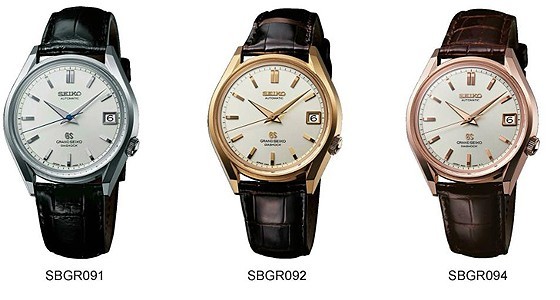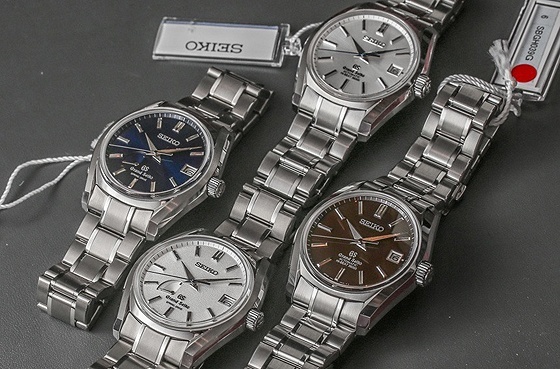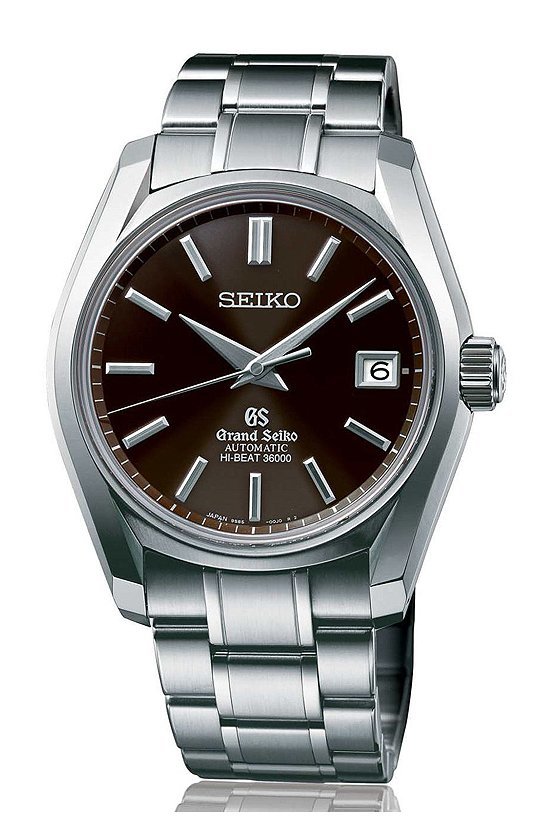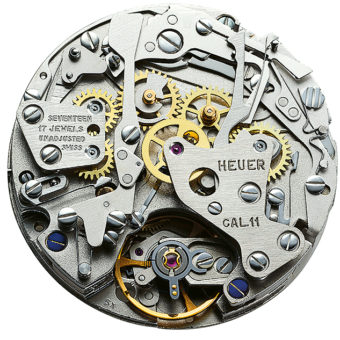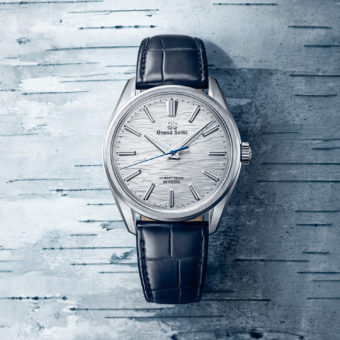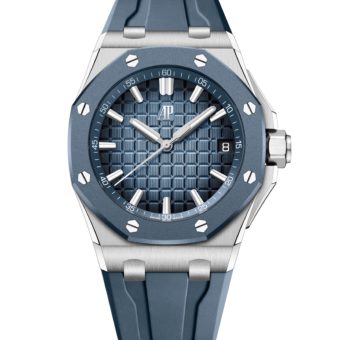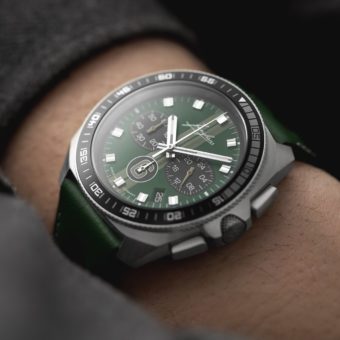I’ll start out by saying that the Grand Seiko 62GS is one of my favorite watches on the market today. This isn’t because I have anything against Swiss watches (which isn’t true) or because I’m a lover of less-beloved horology (which probably is), but because it really is one of the best watches available. Simply put, the Grand Seiko is a timepiece that has attained what I’d consider “classic” designation, and that is a direct result of how the watch was designed 55 years ago.
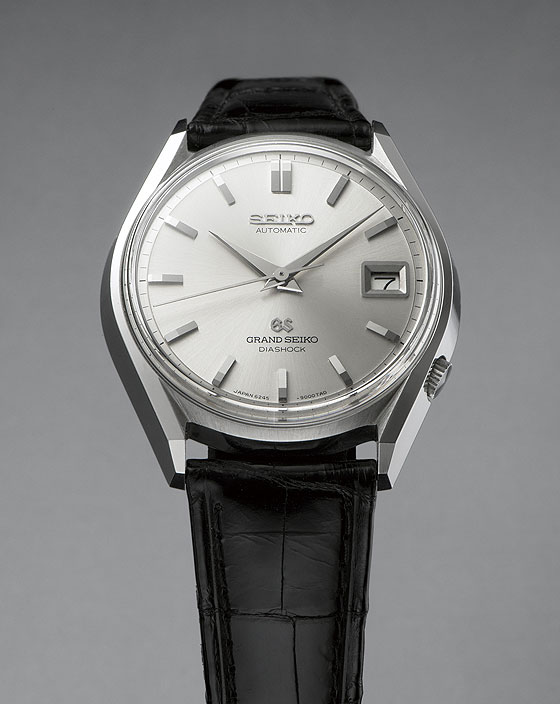
Released earlier in 2015, the Seiko Grand Seiko 62GS is a tribute to the 1967 model that featured the first automatic caliber in the series. In the recent release, Seiko has developed eight references: four re-creations of the 1967 model, and four re-interpretations of that model using two different modern Seiko movements. Overall, Seiko seems to have done a wonderful job with these watches, and this type of purposeful homage is what many enthusiasts can only hope other brands will follow.
The first watch we’ll look at is the stainless steel re-creation model of the 62GS (ref. SBGF095). The watch is also available in 18K white, yellow, and rose gold, with very little variation outside of the reference number and dial color. The 62GS re-creation comes equipped with the in-house Seiko Caliber 9S65, with a power reserve of over 72 hours; the Grand Seiko signature “razor” hour and minute hands; a square date window, and a very noticeable crown at the 4 o’clock position. The dial keeps the traditional brushed steel look with the “GS,” “Grand Seiko,” and “Diashock” right below the center, and the watch is outfitted with a smooth, black crocodile strap. The entire piece is finished using Seiko’s “Zaratsu” polishing technique, and has a caseback stamped with the Grand Seiko collection’s lion emblem. The stainless steel model starts at $4,300 and is limited to 600 pieces – a price I find not at all outrageous considering the magnitude, history, and tested performance of this watch.
The 62GS re-creation is just that, a re-creation. This is the kind of watch that vintage enthusiasts look at and can’t help but admire. Seiko does what I feel is extraordinary work here of not only respecting its roots in the 1967 original version, but also adding a few key modern notes that make this version speak for itself. These include, most notably, the updated Caliber 9S65 movement, and the slightly enlarged height, width, and thickness of the case. In every element from the hands to the lion emblem to the crown, this watch was a great design choice to release on the 55th anniversary of the Grand Seiko series, and truly honors the piece’s lineage. As a brand that has prided itself on developing the first commercialized quartz watches, Seiko continues to prove that its mechanicals are nothing to scoff at, and the 62GS re-creation could be one of its best yet.
The next watch, or rather design, we’ll look at is the modern re-interpretation of the 62GS, available with two exclusive Seiko movements, Spring Drive and High Beat. This re-interpretation displays a liberal approach in redesigning this Seiko classic, and it includes a variety of new features and design choices not previously available in the 62GS Grand series. Most notably, the case has been enlarged to 40 mm for width and 47 mm for height, the crown has been moved to the 3 o’clock position, the leather crocodile strap has been swapped out in favor of a titanium or stainless steel triple-clasp bracelet, and the previously solid caseback has been exchanged for a see-through sapphire window. The High Beat variation uses a mechanical Seiko Caliber 9S85 movement boasting an impressively accurate 36,000 vph frequency, while the Spring Drive variation is fueled by a Seiko Caliber 9R65 and has a power reserve display on the dial indicating the available charge. Each watch is priced at $5,900 — higher than that of the more faithful re-creation due most likely to the modern technologies and materials used to build these timepieces.
As much as the re-creation is an ode to the past, the re-interpretation represents the future of the 62GS line. The watches have proved themselves capable of not only pushing modern technologies and customs in a tasteful way, but also paying tribute to the historical designs and details that made the original automatic “Grand” so notable. The re-interpretation keeps the multi-faceted, “Zaratsu”-finished case, maintains similar “razor” hour and minute hands, and retains the semi-minimalist signature Grand Seiko dial. Even in its new innovations, such as the see-through sapphire caseback with the iconic lion emblem imprinted upon the glass, there is respect for tradition. The only issue I would take with the re-interpretation is with the crown: the “Grand” line became famous in part thanks to the crown at the 4 o’clock position, and the placement of it in a new position at the 3 o’clock, along with the previously absent ‘GS’ mark, seems more a nod to the long-forgotten, rival “King Seiko” series than to the “Grand.” Nonetheless, it appears to be an excellent watch, and certainly a modern re-interpretation that earns my “vintage eye” of approval.
There is a variety of reasons why watch collectors might prefer vintage pieces over contemporary ones — whether it be the history behind a piece, generally lower prices, smaller, child-like wrists (this one is mine), or the desire for more classical aesthetics, among others. With this in mind, it is not very often that a modern watch brand is able to release something new that still has appeal for vintage fans, but the 62GS re-creation is one of those rare exceptions. Similarly, the re-interpretation, while taking a few modern liberties, still pays homage to the “Grand” line, and that is a rare feat in today’s horological world, where too often bigger and shinier is “better.” I still find it amazing that the Grand Seiko line wasn’t available to the American market until 2010, but it is now, and thankfully Seiko has developed eight new classics for us to enjoy.
Caleb Anderson is the Director of Outreach at the online vintage watch boutique theoandharris.com. Since starting at Theo & Harris, he has garnered extensive knowledge on vintage watches, and spends much of his time sharing his opinions within the field. Currently located near New York City, he is a persistent student in all things historical, a writer on watches, and a casual runner.

